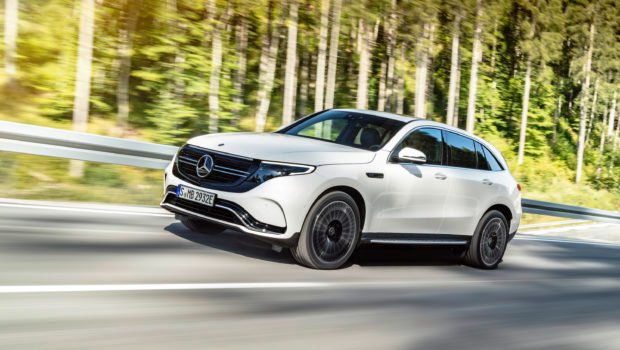February 14th, 2019 by Zachary Shahan
A major media outlet in Germany reported this week that the Mercedes-Benz EQC is sold out for 2019, and probably 2020 as well. In an interview with Welt Online*, Daimler CEO Dieter Zetsche said, “We are sure that we will not be able to meet the demand in 2019 and probably not by 2020.” (That’s a translation from Google.)
So, how many of the EQC electric SUVs will be produced in 2019 and 2020? Well, we don’t really know, but if the order backlog is already nearly full for the next two years and Daimler isn’t indicating a specific figure, our guess is that it isn’t huge. Our most recent estimate was that there’s be a production capacity of 15,000/year to start.
Zetsche also indicated Daimler hopes to have 10 fully electric vehicles on the market by 2022. We’ve previously reported that Mercedes-Benz “has committed to purchasing battery cells worth €20 billion ($23 billion) between now and 2030.” That is one of the larger public commitments in the industry, but it is a fraction of Volkswagen Group’s stated commitment — €35 billion ($40 billion) by 2022.
Of course, plans change over time. In 2016, Daimler was planning for 10 electric models by 2025. That target has been moved up to 2022.
Daimler’s “smart” brand has shifted to a 100% electric focus, so that’s two models — the smart fortwo and smart forfour. At the moment, Mercedes-Benz only has the B250e, but it is an old design that originally used a Tesla powertrain. Mercedes-Benz also has 5 plug-in hybrid models on the market, but those don’t count in the fully electric target.
Presumably, the remaining 7 electric models Zetsche is targeting for 2022 are fully electric models from the ground up, like the Mercedes-Benz EQC. The biggest question is how quickly Daimler plans to scale up production capacity for these vehicles in order to make them more than “compliance cars.” Selling out for two years with modest production capacity is not exactly “rEVolution.” Does Daimler intend to ramp up production at a pace similar to Tesla? Or is it intent on slow-walking the transition?
*h/t NTV and Alex Voigt/TMC










